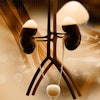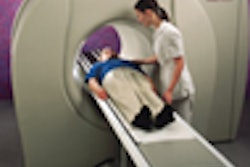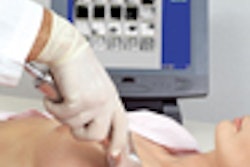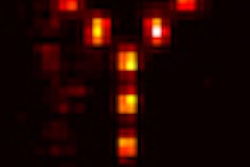Comparing four lung cancer staging methods in a 45-minute talk might seem overambitious, but Dr. Atul Mehta had done his homework. The pulmonologist and head of bronchology at the Cleveland Clinic Foundation in Ohio reviewed nearly 1,500 studies on CT, PET, transbronchial needle aspiration (TBNA), and cervical mediastinoscopy before coming to some interesting conclusions at the Chest 2000 conference in San Francisco last week.
"How do we test a test?" he asked. "Of course, we'll look at the diagnostic utility and the safety. Cost is a major limitation these days, and technical limitations should also be considered before choosing a test."
Thorough staging and workup begins with the first suspicion of bronchogenic carcinoma, and is essential for the successful management of a clinically difficult disease, Mehta said. For example, a recent report in Cancer noted that up to 45% of patients may have nodal disease at thoracotomy, he said. And just 15% of patients have resectable disease at the time of presentation.
CT
Over the past 20 years, nearly 1,100 studies have been published on CT of the chest. CT has become widely available, and reasonably affordable -- no costlier than a chest x-ray in some institutions, Mehta said.
But CT studies can be hard to evaluate because they come in so many flavors, including ultrafast, high-resolution, spiral, enhanced and unenhanced, thin and thick slices. And several manufacturers produce a wide variety of machines. It's not surprising, then, that accuracy varies widely among CT scan results, in the range of 35% to 95%, he said.
"So I chose one of the articles a pulmonologist would be most concerned with. There was a beautiful meta-analysis published about 10 years ago in the American Review of Respiratory Disease that included all of the studies published between 1980 and 1988" (May 1990, Vol.141:5, Pt 1, pp. 1096-1101).
In all, the article analyzed 43 well-performed studies on the role of CT in lung cancer to draw its conclusions, Mehta said. The study teased the data by changing prevalences and other calculations, and looked at both weighted and unweighted means for different parameters. But it didn't change the sensitivity or specificity of the modality, both of which ranged between 79% and 83%, he said.
"When everything is said and done, the accuracy of CT is about 80%," he said. "Can we live with that accuracy? Can we tell the patient based on 80% accuracy that 'you go for surgery' and 'you don't go for surgery'? Is [CT] acceptable as a sole staging tool? The answer to the question is no."
Even when the analysis was limited to results from fourth-generation CT scanners, accuracy rose only to about 84%, he said, so the modality's limitations don't appear to be technology-dependent.
"There is also universal agreement on CT scan findings that if you see a lymph node which is more than 10 mm in diameter, it is considered abnormal," he said. But the number is arbitrary, Mehta said. A recent study comparing CT results to TBNA found that 15% of lesions between 5-9 mm were positive for metastases, indicating a poor correlation between tumor size and the presence of metastatic cancer (American Journal of Respiratory and Critical Care Medicine, February 2000, Vol/161:2, Pt 1, pp. 601-6077).
Moreover, the extent of surgical exploration isn't mentioned in most CT studies, a phenomenon that could affect their accuracy. "What I mean by that is that surgeons do not go after all of the lymph nodes mentioned by the radiologist," Mehta said.
So should CT be used at all? "The answer is yes," he said. "Every patient who is suspected of having lung cancer should have a CT scan. And here is my reasoning: If you see a T4 lesion you can automatically deem the patient unresectable." The same applies to Pancoast tumors, and CT may also show pleural effusion and additional lesions not suspected on conventional chest x-rays. CT is mandatory before elective TBNA, and sets the pace for further workup, he added.




















